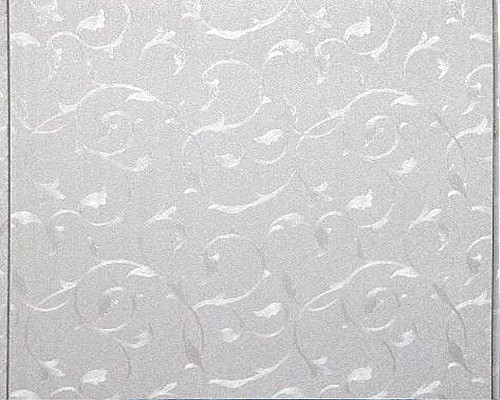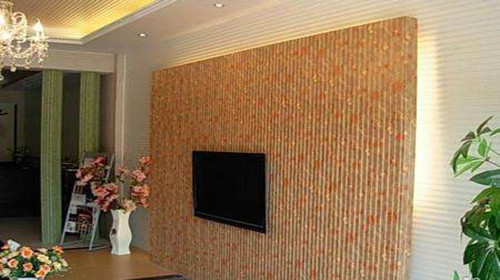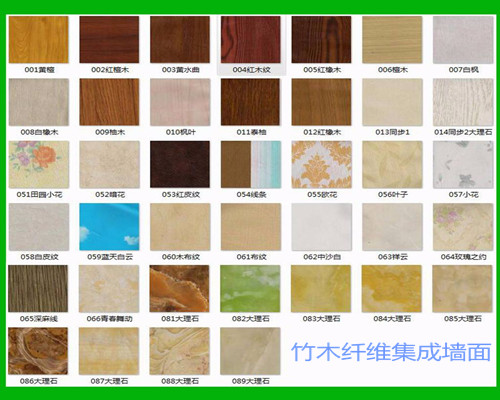The integrated wall surface is a relatively high-end material that is formed by high-temperature extrusion of nano- and bamboo-fiber-based materials. Its advantage is that the wall surface made is pollution-free and strong in three-dimensionality. However, there are disadvantages in integrating the walls, which makes some consumers think carefully when they are decorating. So, what are the disadvantages of integrated wall surface ? The following Xiaobian will give you an introduction.

What are the disadvantages of integrated wall
1. The audience of the group is narrow, because the integrated wall is a high-end product that is more suitable for white-collar workers and successful people. Its price is similar to that of diatom mud, which is a bit expensive. Therefore, the market for integrated walls is mainly in first and second-tier cities.
2. What are the disadvantages of integrated walls? It causes some decoration workers to not do their jobs and will cause them to lose their jobs. Because the integrated wall is easy to install and simple. About half a square metre of the house can be completed as long as two people are half a month long.

3. Market competition is chaotic. The integrated walls are now mainly concentrated in the southern region. As a result, in the short period of one year in the southern region, many integrated wall brands have emerged and the market competition is fierce. The northern region will be relatively small, resulting in the market is not competitive, integrated walls become the seller's market, there is no way to let consumers.
4. What are the disadvantages of integrated walls? Because it is still in the promotion stage, many consumers know little about them. Moreover, the integrated wall market in the north has not yet been fully opened, leading local consumers to go to nearby big cities to purchase them.
5. Chaos in the market, in the first-tier cities of the South, many brands of integrated wall coverings can be raised in one year, and each brand says that their home is good, making it difficult for consumers to make choices. In the North, there are few integrated wall brands and they belong to the natural monopoly stage. There is relatively little space for consumers to choose.

6. There are disadvantages in the wall material, such as: aluminum alloy integrated wall surface is made by three layers of aluminum layer, foam layer, aluminum foil. Its surface is made of aluminum foil with a thickness of about 1 mm and belongs to metal. If there is knocking or scratching, the surface will have more obvious marks. If the entire room is made of aluminum alloy integrated wall surface, this will cause metal conductive, easy to shield mobile phones, WiFi and other signals, there will be metal radiation, such as the purchase of poor quality products, will cause heavy metal pollution after installation. If the kitchen also uses aluminum alloy integrated wall surface, it will be conductive because the kitchen often has water and it is very humid. In addition, the raw material of the aluminum alloy integrated wall surface may have oxidation of the aluminum layer, and it is difficult to shape and transport. There are bamboo fiber integrated wall surface, it is a new generation of integrated wall products, its main raw material is bamboo fiber, the surface of the resin film, 3D technology imprint. This type of integrated wall is relatively heavy, because it is an environmentally friendly material and the price is very expensive.

The article concludes: The integrated wall is relatively expensive. If the funds are insufficient during the renovation, it is necessary to carefully consider whether to use the integrated wall. It has many advantages, but it has many disadvantages. What are the disadvantages of the above integrated wall can learn more about the reference, understand these in the decoration will know more about how to choose the decoration materials.
Plastic Additives, also known as plastic additives, are compounds that must be added to polymers (synthetic resins) to improve their processing properties or to improve the properties of the resin itself. For example, in order to reduce the molding temperature of PVC resin, to make the product soft and added plasticizer; Another example is to add foaming agent in order to prepare light weight, anti - vibration, heat insulation, sound insulation foam plastics; The thermal decomposition temperature of some plastics is very close to the molding temperature, and the molding cannot be done without adding heat stabilizer. Therefore, the plastic assistant agent occupies a particularly important position in the plastic forming process. A class of auxiliary agents for plastic molding products, including plasticizer, heat stabilizer, antioxidant, light stabilizer, flame retardant, foaming agent, antistatic agent, mildew agent, colorant and whitening agent (see pigment), filler, coupling agent, lubricant, mold release agent and so on. Colorants, brighteners and fillers are not special plastics chemicals, but the general use of materials.
Imported Bio-based Plastic Additives
Imported Bio-Based Plastic Additives,Hobum Elo Plasticizer,Arkema Elo Plasticizer,Polar Elo Plasticizer
Xingbang High Molecular Materials Co., Ltd. , https://www.chemicaladditive.com